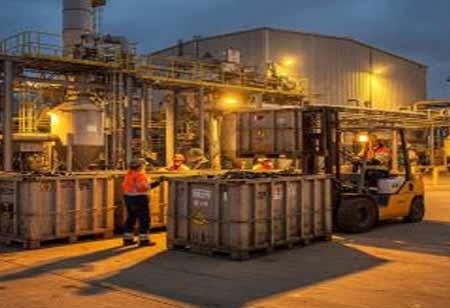CLOSE
Specials
I agree We use cookies on this website to enhance your user experience. By clicking any link on this page you are giving your consent for us to set cookies. More info
Be first to read the latest tech news, Industry Leader's Insights, and CIO interviews of medium and large enterprises exclusively from Energy Tech Review
Thank you for Subscribing
Digital Oilfield Market to grow at 7.2% CAGR by 2030
The digital oilfield represents the oil industry's digital transformation. The digital oilfield promises to enable the oil sector to evaluate, gather, and make quick choices by utilizing

By
Energy Tech Review | Wednesday, January 05, 2022
Stay ahead of the industry with exclusive feature stories on the top companies, expert insights and the latest news delivered straight to your inbox. Subscribe today.
The analysis of the digital oilfield market which is forecasted to elevate from $27.4 billion to $54.4 billion by the end of 2030 at the rate of 7.2 percent.
FREMONT CA: The digital oilfield represents the oil industry's digital transformation. The digital oilfield promises to enable the oil sector to evaluate, gather, and make quick choices by utilizing a combination of developing technologies such as the internet of things (IoT), artificial intelligence (AI), mobile connection, augmented reality, and cloud computing. The digital oilfield market was valued at $27.4 billion in 2020 and is expected to grow at a CAGR of 7.2 percent from 2022 to 2030, reaching $54.4 billion by 2030. Intense competition in the oil sector and the benefits of digital oil filing are factors driving the market growth. Because of the fierce rivalry, the oil giants are significantly investing in the digital oilfield.
Incorporating cutting-edge digital technologies with new methods simplifies operations. The digital oilfield has the potential to increase output, minimize operating costs, and reduce unscheduled equipment and well shutdowns. Furthermore, oil businesses can employ data acquired by operators, the internet of things (IoT), and engineers from all aspects of their value chains. However, the expansion of the renewable energy industry is impeding the oil business, reducing the demand for digital oilfield services. As a result, the expansion of the digital oilfield sector is hindered. The renewable energy industry is predicted to develop at an 8.4 percent CAGR. Furthermore, the high initial cost of digital oilfield solutions impedes the growth of the digital oilfield industry.
The hardware solutions category generated 46.6 percent of revenue and is predicted to rise at a CAGR of 6.9 percent over the projection period. This is due to the rising adoption of digital technologies in the oilfield. Implementing digital solutions in the oilfield necessitated clever hardware.
The production optimization segment accounted for 20.8 percent of revenue and is expected to rise at a CAGR of 7.8 percent over the projection period. One of the primary growth factors for production optimization is the benefits to the oil and gas industry. The benefits of production optimization include increasing or decreasing target gas and oil production across numerous locations while lowering production costs. The offshore category accounted for 81.3 percent of revenue and is predicted to rise at a CAGR of 7.7 percent during the projection period. The market is expanding because of increased deepwater drilling and production activities.

Copyright © 2025 Energy Tech Review. All rights reserved






